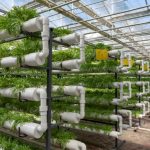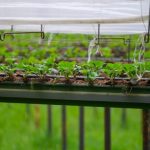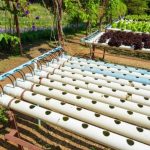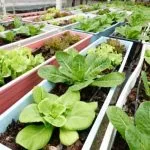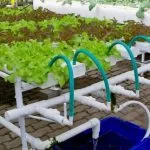The Nutrient Film Technique (NFT) is a highly regarded hydroponic system that has gained popularity among gardening enthusiasts and commercial growers alike. This innovative method allows plants to grow in a thin film of nutrient-rich water, delivering nutrients directly to their roots. With its unique design and numerous benefits, NFT has become a preferred choice for hydroponic cultivation.

As awareness of sustainable farming practices and the desire for fresh, homegrown produce increase, more individuals are turning to NFT for their indoor gardening needs. This article explores the Nutrient Film Technique pros and cons in detail, shedding light on its advantages and drawbacks and providing insights into its effectiveness as a hydroponic system. Whether you’re a novice or experienced gardener, understanding the fundamentals of NFT can revolutionize your approach to indoor cultivation. Let’s delve deeper into this remarkable hydroponic technique.
Advantages of Nutrient Film Technique
1. Water Efficiency
NFT systems offer significant advantages in terms of water efficiency compared to traditional soil-based gardening methods. Here’s why:
– Recirculation: NFT systems utilize a continuous flow of nutrient-rich water that is recirculated throughout the system. This recirculation minimizes water wastage, as the excess water is collected and reused, resulting in significant water conservation.
– Reduced Evaporation: The design of NFT systems, with their thin film of water flowing over plant roots that are enclosed in channels, helps reduce water evaporation. This further contributes to water efficiency and ensures that plants receive an adequate water supply without unnecessary loss.
2. Faster Growth and Higher Yields
NFT provides plants with optimal growing conditions, leading to accelerated growth and higher yields. Here’s how NFT achieves this:
– Continuous Nutrient Supply: In NFT systems, plants receive a continuous supply of nutrients and oxygen directly to their roots. This uninterrupted access to essential elements promotes faster growth rates and enables plants to reach their full potential.
– Enhanced Nutrient Uptake: The nutrient film in NFT systems allows for efficient absorption of nutrients by plant roots. As a result, plants can uptake nutrients more effectively, leading to healthier growth and increased productivity.
Related: Get a list of the best plants to grow in NFT system hydroponics.
3. Space Efficiency
NFT systems are well-suited for environments with limited space, making them ideal for urban gardening and indoor cultivation. Here’s why NFT is space-efficient:

– Vertical Orientation: NFT systems are designed to utilize vertical space effectively. By allowing plants to grow vertically along channels or tubes, NFT maximizes the use of available space, making it suitable for small gardens, balconies, or even indoor setups.
– Vertical Stacking and Tiered Configurations: NFT systems can be easily adapted to incorporate vertical stacking or tiered setups. This further optimizes space usage and allows for a greater number of plants to be cultivated in a compact area.
Related: Want to know if there are benefits to growing vertically? Read about hydroponics and vertical farming.
4. Reduced Pest and Disease Risks
NFT systems offer advantages in terms of pest and disease management compared to traditional soil-based gardening. Here’s why NFT reduces these risks:
– Soil-Borne Pest Prevention: Since NFT systems don’t involve soil, they inherently minimize the risk of soil-borne pests and diseases. Without soil, pests like nematodes and soil-borne pathogens have limited access to plants, reducing the need for chemical pesticides or soil fumigation.
– Cleaner Growing Environment: NFT systems provide a clean and controlled environment for plant growth. By eliminating soil as a potential source of contamination, NFT minimizes the chances of diseases spreading among plants. This cleaner growing environment contributes to healthier plants and reduces the reliance on pesticides.
– No Root Rot: The thin film prevents root rot and promotes healthy development by keeping the roots’ top portion dry and allowing them access to air.
5. Nutrient Control and Customization
NFT systems offer precise control over nutrient delivery, allowing growers to tailor nutrient solutions to meet the specific requirements of different plants. Here’s how NFT provides nutrient control and customization:
– Nutrient Solutions: In NFT systems, growers have complete control over the composition and concentration of nutrient solutions. This enables them to adjust the nutrient levels based on plant needs, ensuring optimal growth and development.
– pH and EC Management: NFT systems allow for easy monitoring and adjustment of pH levels and electrical conductivity (EC) of the nutrient solution. This flexibility enables growers to maintain the ideal pH and nutrient balance required for specific plants, promoting healthy growth.
By harnessing the water efficiency, accelerated growth, space optimization, pest resistance, and nutrient control provided by NFT systems, growers can enjoy numerous benefits and achieve successful hydroponic cultivation.
Disadvantages of Nutrient Film Technique
While Nutrient Film Technique (NFT) offers numerous benefits, it’s important to be aware of some potential drawbacks. Understanding these challenges can help growers make informed decisions and mitigate any issues that may arise. Here are some potential nutrient film technique problems you could run into and solutions to mitigate them:
1. Root Drying
One of the potential challenges in NFT systems is the risk of root drying if the nutrient film is interrupted or insufficient. Here’s what you need to know:

– Interruptions in Nutrient Flow: If the flow of the nutrient solution is interrupted due to clogging, pump malfunctions, or uneven channel slopes, the roots may be exposed to air for extended periods. This can lead to root dehydration and negatively impact plant health and growth.
– Maintaining Consistent Nutrient Flow: To prevent root drying, it’s crucial to ensure a consistent and uninterrupted flow of the nutrient solution. Regular monitoring of the system, cleaning of channels, and proper adjustment of the pump’s flow rate are essential to maintain a healthy and continuous film of nutrient solution.
To prevent the above problems, you should have a robust NFT system design and build the setup properly.
2. Limited Nutrient Buffering
Compared to some other hydroponic systems, NFT has a lower nutrient buffering capacity. This means that nutrient imbalances or deficiencies can occur more rapidly. Consider the following:
– Precise Nutrient Monitoring: Due to the limited nutrient buffering capacity, it’s important to closely monitor nutrient levels and pH in NFT systems. Regular testing and adjustment of the nutrient solution are necessary to prevent imbalances that could negatively affect plant health and growth.
– Nutrient Solution Management: Careful attention should be given to the nutrient solution composition and its regular replenishment. Regular monitoring of nutrient concentrations, pH levels, and periodic adjustments are necessary to ensure an optimal nutrient environment for plant growth.
3. High Sensitivity to Power Outages or Pump Failures
NFT systems are dependent on a reliable power source and functioning pumps for the continuous flow of the nutrient solution. Here’s what you should know:
– Dependency on Power and Pumps: NFT systems require electricity to power the pumps that circulate the nutrient solution. A power outage or pump failure can disrupt the flow of the nutrient film, potentially affecting plant health and growth.
– Importance of Backup Systems: To mitigate the risks associated with power outages or pump failures, it’s advisable to have backup systems in place. This can include battery-powered backup systems, alternative power sources, or redundant pump setups. Having contingency plans ensures that plants receive the necessary nutrients even in unexpected situations.
4. Root Clogging
With roots growing inside narrow enclosed channels, they could get entangled and block the smooth flow of water. It’s important to regularly inspect the system and clean every single channel regularly to prevent this from happening.
By being aware of these cons and taking appropriate measures to address them, growers can optimize the performance of NFT systems and overcome any potential challenges. If managing these challenges seems too complicated, then consider DWC hydroponics instead. You can compare the 2 systems with our DWC vs NFT hydroponics takedown.

